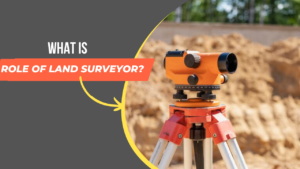Land surveying is not just a technical discipline; it is an art that combines science, technology, and creativity. In Pune, India, a land survey course offers a transformative journey, providing individuals with the insights and skills needed to master this intricate art form. This blog post takes you on a captivating exploration of land surveying, offering valuable insights from Pune’s renowned land survey course. Join us as we unravel the artistry behind land surveying and discover how the course in Pune nurtures aspiring surveyors into skilled artisans of measurement.
The Fusion of Science and Creativity:
Land surveying is often perceived as a science-based practice, centered around precise measurements and technical calculations. However, Pune’s land survey course emphasizes the artistry within this discipline. It highlights the creative aspects of surveying, such as visualizing the landscape, interpreting data, and generating accurate representations. This fusion of science and creativity brings a unique perspective to the art of land surveying.
Mastering the Tools of the Trade: Land Survey Course
Pune’s land survey course immerses students in a hands-on learning experience, allowing them to master the tools of the trade. From traditional equipment like the theodolite to cutting-edge technologies such as GPS and laser scanning, students gain proficiency in handling a diverse range of surveying instruments. Through practical exercises and real-world applications, they learn to navigate the complexities of fieldwork, honing their skills and cultivating their artistic approach to measurement.
Precision Mapping: Land Survey Course
A Canvas of Accuracy: Mapping is a key component of land surveying, and in Pune’s land surveying course, students learn to create intricate and precise maps. They delve into cartographic principles, map projections, and geospatial data visualization. This aspect of the course encourages students to unleash their creativity while maintaining the utmost accuracy. It is through the artistry of precision mapping that surveyors bring the landscape to life on paper, transforming data points into visual representations.
Spatial Analysis:
Unveiling Hidden Patterns: Surveyors trained in Pune’s land survey course develop a keen eye for spatial analysis. They learn to uncover hidden patterns, relationships, and trends within the data they collect. By incorporating elements of artistic interpretation and critical thinking, surveyors can identify anomalies, detect irregularities, and make informed decisions based on their spatial insights. This ability to perceive the landscape in a nuanced way elevates land surveying to an artistic endeavor.
Capturing the Essence of the Landscape:
Pune’s land survey course encourages surveyors to go beyond mere measurements and capture the essence of the landscape they survey. By appreciating the cultural, historical, and environmental context of the area, surveyors add depth and meaning to their work. This artistic approach allows them to contribute to the preservation and sustainable development of Pune’s unique landforms and heritage.
Conclusion:
land surveying course in Pune is not just about acquiring technical knowledge; it is a transformative journey that unveils the artistry behind land surveying. By blending science, technology, and creativity, this course nurtures aspiring surveyors into skilled artisans of measurement. From mastering the tools of the trade to precision mapping and spatial analysis, students in Pune’s land survey course gain a deep appreciation for the art of land surveying. By infusing their work with creativity and capturing the essence of the landscape, these surveyors leave a lasting impact on Pune’s development and contribute to the artistic tapestry of land surveying as a whole.




